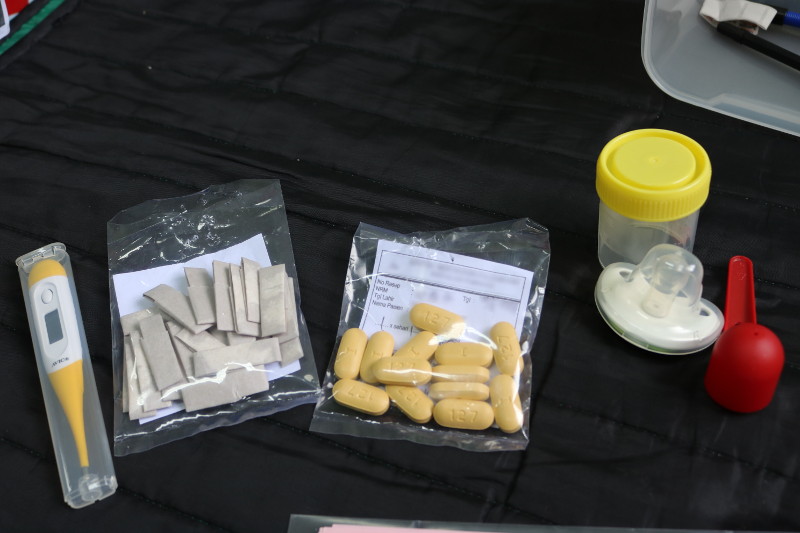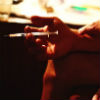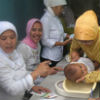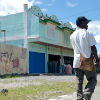Married women endure the highest rate of new HIV infection in Indonesia
Married women endure the highest rate of new HIV infection in Indonesia
Access to HIV testing and treatments is getting easier in Indonesia. The government, healthcare industry, and community organisers have also slowed the spread of HIV among high-risk groups like intravenous drug users, men who have sex with men, and sex workers. People in these groups are practicing safer sex using condoms and choosing clean needles more frequently.
But low-risk groups – like heterosexual mothers – have been left behind in these advances.
Often contracting HIV from unfaithful and/or drug-using husbands, prevalence among married women is increasing faster than any other group. Government officials and healthcare professionals have not paid enough attention to this increasing rate of prevalence. They often believe that low-risk means zero-risk, assuming that married women and their husbands are both faithful and drug-free.
While government officials and healthcare professionals acknowledge the need to target married women, capacity to do so is limited. The government has made some services available to HIV-positive married women through its Prevention of Mother to Child Transmission programme. For instance, the government mandates that all pregnant women accessing antenatal care must be offered an HIV test. In reality however, the service is rarely offered. Healthcare professionals are either unaware of the mandate or do not have the time or equipment needed for the test.
The lack of acknowledgment and access to services compounds these women’s vulnerability to HIV.
| A traditional song rewritten by South Sumatran HIV-positive mothers on HIV testing and the stigma of being open about HIV with health workers. The Palembang health office has begun to speed up its HIV screening program for expecting mothers. |
HIV in numbers
Despite improvements, the HIV epidemic in Indonesia remains one of the fastest growing in Asia.
In 2016, an estimated 697,000 of 257 million Indonesians were HIV-positive. This represents a 0.27 per cent prevalence rate. By contrast, prevalence rates in Australia and New Zealand are roughly 0.10 and 0.06 per cent, respectively.
Almost half of all those living with HIV in Indonesia today are women (age 15 to 49) – a greater proportion than in recent years. In 2007, around 25,000 or 22 per cent of all Indonesians living with HIV were women. By 2015, this number had risen to 250,000, or 44 per cent of all HIV-positive people.
A 2016 Ministry of Health report states that higher-risk heterosexual sex accounts for nearly half of all new infections. The remainder of new infections are mostly transmitted through drug injection, male to male sex, and sex work.
Risk to unborn babies
It is clear that governments and healthcare professionals must pay more attention to women’s rates of HIV infection – particularly for married women of child-bearing age, who can transmit the infection to their babies without even having realized their own HIV status.
Irma has four young children but she never thought to get tested for HIV during any of her pregnancies, nor was such a test ever offered to her. However, when her husband and son grew gravely ill they were both tested and found to be HIV positive. Her husband had already developed AIDs by this stage and he passed away shortly after diagnoses. Irma was also tested and found to be HIV positive.
Irma and her son now take antiretroviral drugs every day. Sometimes though, the clinic runs out of a supply of drugs and life becomes even more difficult than normal. Irma’s three other children are all HIV negative. It is for her children that Irma forces herself out of bed each day and it is for them that she is determined to remain strong.
 |
|
Irma and her son take antiretroviral (ARV) medication every day. (Najmah) |
Nia’s story is similar in many ways to Irma’s. Nia did not know her husband had HIV until he grew very sick and tested positive for HIV. He then confessed to her that he was an intravenous drug user and had paid for sex many times over his career as a truck driver.
Nia was six months’ pregnant when her test came back positive for HIV. Determined to do all she could for her unborn baby, Nia learnt everything she could about HIV.
She learnt that to reduce the risk of passing HIV onto her baby she needed to have a caesarean section and she needed to bottle feed. Nia informed her doctor of her HIV status and said that when the time came she wanted a caesarean delivery.
But after medical staff found out Nia was HIV positive, they ostracised her, and when she went into labour staff refused conduct a caesarean section because they thought it posed a risk to them of catching HIV. Nia was therefore force to labour alone.
She does not know yet if her baby is HIV positive but her baby is on daily antiretroviral drugs and will be tested before he turns two. If he does have HIV, he will endure a lifetime of taking medication.
Reducing transmission
If detected early, women can significantly reduce the chance of passing HIV to their babies. But government officials and healthcare professionals have paid little attention to HIV among women because many assume that married mothers are low-risk. What they often miss, though, is that ‘low-risk’ married mothers may be married to high-risk men. A lack of HIV testing during pregnancy and low-levels of understanding among medical professionals compound babies’ vulnerability to HIV.
Sadly, the stories of Irma and Nia are not uncommon. There are heart-warming stories of care and devotion but for many women there is no happy ending.
Najmah (najem240783@gmail.com) is a PhD student at AUT University in New Zealand and lecturer at Sriwijaya University in Indonesia.
Sharyn Graham Davies (sharyn.davies@aut.ac.nz) is an associate professor at AUT University in New Zealand.
Sari Andajani (sari.andajani@aut.ac.nz) is a senior lecturer at AUT University in New Zealand.
Related articles from the archive
 |
May 17, 2016 |
|
 |
Feb 08, 2015 |
|
 |
Oct 28, 2014 |












